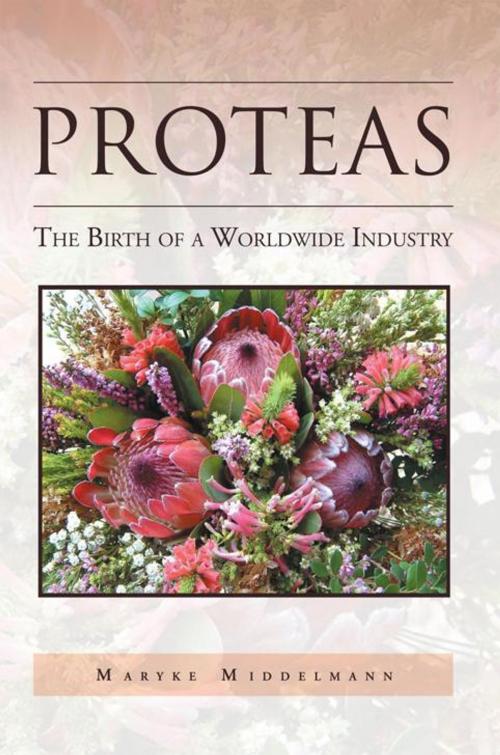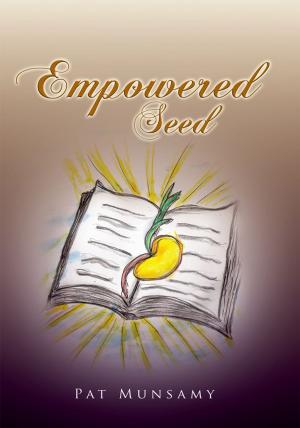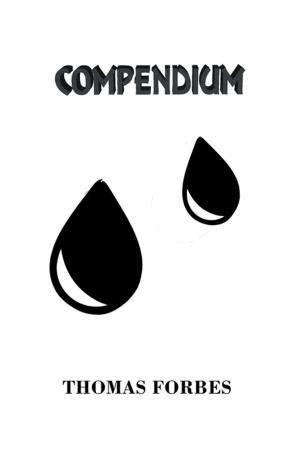| Author: | Maryke Middelmann | ISBN: | 9781469133201 |
| Publisher: | Xlibris UK | Publication: | February 7, 2012 |
| Imprint: | Xlibris UK | Language: | English |
| Author: | Maryke Middelmann |
| ISBN: | 9781469133201 |
| Publisher: | Xlibris UK |
| Publication: | February 7, 2012 |
| Imprint: | Xlibris UK |
| Language: | English |
South Africa is situated at the Southern-most tip of Africa and boasts over 21,000 species of plants, all crammed into one country! The Cape Floral Kingdom, the smallest of the six floral kingdoms of the world, occupies a mere 90,000 square kilometers in the south western corner of South Africa, yet it is home to over 8,500 species of plants. By comparison the British Isles, which is three and a half times larger than this, support only 1,400 species. Only the Panama rain forest has a comparable species density to the Cape Floral Kingdom! The earliest record is that of a Dutch missionary who gathered plants in 1624 when his ship replenished its water supply on the return voyage from Batavia to Holland. His descriptions and drawings gave the world its first clues to a treasure house of new and exciting plants along its shores. Various botanists visited the Cape in the years that followed and by the year 1700 nearly 1,000 Cape plants were known. The flowers most commonly associated with South Africa are, of course, the proteas, named by Linnaeus after the Greek god Proteus who was able to assume many different forms. The name is apt, as proteas are found in all shapes. They may, like Protea cynaroides, the South African floral emblem, have enormous flower heads, but there are species that have flowers heads of only 30 mm diameter. They even come as trees, like the world-famous silver tree, Leucadendron argenteum. This tree was reported to be cultivated in Kew Gardens, England, as early as 1789. The Scottish botanist Francis Masson, on a great voyage around the world with Captain Cook, collected no less than 400 species of plants new to scientists of Europe, including 79 specimens of protea and 50 species of Cape pelargonium, commonly but incorrectly known as geraniums. It is difficult to compare the small, sweet-smelling Freesia found in the flora of the Western Cape with the impressive long-stemmed Freesias which are now sold worldwide as cut flowers. At the auctions in Holland, Freesias worth more than 100 million US$ are sold annually. The so-called Guernsey lily is actually just another bulb from the Cape, the Nerine sarniensis. One explanation of how Nerine reached Guernsey is that a Dutch ship, homeward bound from the Far East, was wrecked on the Channel Islands. On board were boxes of Cape bulbs consigned to Holland. Washed ashore on Guernsey, the bulbs took root and in due course, to the astonishment and delight of the inhabitants, flowered. One of the first flowers to be shipped commercially to Europe was the Ornithogalum (or Chincherinchee), which because of its extremely long shelf-life could be sent by sea. They were in high demand in the early 1950s and seem to have made a come-back with new varieties. Countries such as the Netherlands, Japan, and Germany have developed enormous horticultural industries over the years by focusing their efforts on breeding and selection of plants, many of which are native to South Africa, including gladioli, freesias, lobelia to name but a few. Proteas were not commercialised until much later, because they were difficult to propagate. The author had access to numerous magazine and newspaper clippings from around the world, which came into her possession after the death of Walter Middelmann who was known by the family to be a great collector of books and cuttings on the many subjects that interested him. This together with documents of the South African Protea Producers and Exporters Association (SAPPEX) and the International Protea Association, (IPA) as well as other associations world-wide, makes for an interesting history. It all started with wild harvesting in the early 1960s to cultivar development up to 2010. The author was the chairman of both SAPPEX and IPA for many years. She was also editor of both SAPPEX News (quarterly) and the IPA Journal (bi-annually) from which a wealth of information was available. Apart from these documents, she also relied on
South Africa is situated at the Southern-most tip of Africa and boasts over 21,000 species of plants, all crammed into one country! The Cape Floral Kingdom, the smallest of the six floral kingdoms of the world, occupies a mere 90,000 square kilometers in the south western corner of South Africa, yet it is home to over 8,500 species of plants. By comparison the British Isles, which is three and a half times larger than this, support only 1,400 species. Only the Panama rain forest has a comparable species density to the Cape Floral Kingdom! The earliest record is that of a Dutch missionary who gathered plants in 1624 when his ship replenished its water supply on the return voyage from Batavia to Holland. His descriptions and drawings gave the world its first clues to a treasure house of new and exciting plants along its shores. Various botanists visited the Cape in the years that followed and by the year 1700 nearly 1,000 Cape plants were known. The flowers most commonly associated with South Africa are, of course, the proteas, named by Linnaeus after the Greek god Proteus who was able to assume many different forms. The name is apt, as proteas are found in all shapes. They may, like Protea cynaroides, the South African floral emblem, have enormous flower heads, but there are species that have flowers heads of only 30 mm diameter. They even come as trees, like the world-famous silver tree, Leucadendron argenteum. This tree was reported to be cultivated in Kew Gardens, England, as early as 1789. The Scottish botanist Francis Masson, on a great voyage around the world with Captain Cook, collected no less than 400 species of plants new to scientists of Europe, including 79 specimens of protea and 50 species of Cape pelargonium, commonly but incorrectly known as geraniums. It is difficult to compare the small, sweet-smelling Freesia found in the flora of the Western Cape with the impressive long-stemmed Freesias which are now sold worldwide as cut flowers. At the auctions in Holland, Freesias worth more than 100 million US$ are sold annually. The so-called Guernsey lily is actually just another bulb from the Cape, the Nerine sarniensis. One explanation of how Nerine reached Guernsey is that a Dutch ship, homeward bound from the Far East, was wrecked on the Channel Islands. On board were boxes of Cape bulbs consigned to Holland. Washed ashore on Guernsey, the bulbs took root and in due course, to the astonishment and delight of the inhabitants, flowered. One of the first flowers to be shipped commercially to Europe was the Ornithogalum (or Chincherinchee), which because of its extremely long shelf-life could be sent by sea. They were in high demand in the early 1950s and seem to have made a come-back with new varieties. Countries such as the Netherlands, Japan, and Germany have developed enormous horticultural industries over the years by focusing their efforts on breeding and selection of plants, many of which are native to South Africa, including gladioli, freesias, lobelia to name but a few. Proteas were not commercialised until much later, because they were difficult to propagate. The author had access to numerous magazine and newspaper clippings from around the world, which came into her possession after the death of Walter Middelmann who was known by the family to be a great collector of books and cuttings on the many subjects that interested him. This together with documents of the South African Protea Producers and Exporters Association (SAPPEX) and the International Protea Association, (IPA) as well as other associations world-wide, makes for an interesting history. It all started with wild harvesting in the early 1960s to cultivar development up to 2010. The author was the chairman of both SAPPEX and IPA for many years. She was also editor of both SAPPEX News (quarterly) and the IPA Journal (bi-annually) from which a wealth of information was available. Apart from these documents, she also relied on















